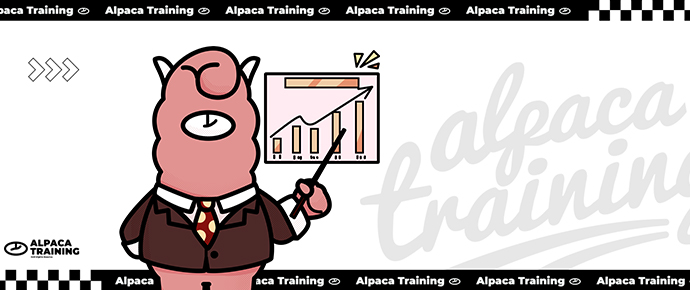剑桥雅思18共收集了雅思真题4套,羊驼雅思整理了第一套阅读真题答案及解析Test 1 Reading,以下是阅读第三篇文章Passage3的文章原文,供烤鸭们复习参考。

剑桥雅思18听力和阅读真题答案及解析汇总查看剑桥雅思18真题答案解析汇总,为助力考生们备考雅思,羊驼雅思APP推出剑桥雅思真题及答案解析视频,可在羊驼雅思APP课程一栏获取剑雅系列视频信息。
READING PASSAGE 3
You should spend about 20 minutes on Questions 27-40. which are based on Reading Passage 3 below.
Conquering Earth's space junk problem
Satellites, rocket shards and collision debris are creating major traffic risks in orbit around the planet. Researchers are working to reduce these threats
A
Last year, commercial companies, military and civil departments and amateurs sent more than 400 satellites into orbit, over four times the yearly average in the previous decade. Numbers could rise even more sharply if leading space companies follow through on plans to deploy hundreds to thousands of large constellations of satellites to space in the next few years.
All that traffic can lead to disaster. Ten years ago, a US commercial lridium satellite smashed into an inactive Russian communications satellite called Cosmos-2251. creating thousands of new pieces of space shrapnel that now threaten other satellites in low Earth orbit- the zone stretching up to 2.000 kilometres in altitude. Altogether, there are roughly 20.000 human-made objects in orbit, from working satellites to small rocket pieces. And satellite operators can't steer away from every potential crash, because each move consumes time and fuel that could otherwise be used for the spacecraft's main job.
B
Concern about space junk goes back to the beginning of the satellite era, but the number of objects in orbit is rising so rapidly that researchers are investigating new ways of attacking the problem. Several teams are trying to improve methods for assessing what is in orbit, so that satellite operators can work more efficiently in ever-more-crowded space, Some researchers are now starting to compile a massive data set that includes the best possible information on where everything is in orbit. Others are developing taxonomies of space debris- working on measuring properties such as the shape and size of an object, so that satellite operators know how much to worry about what's coming their way.
The alternative, many say, is unthinkable. Just a few uncontrolled space crashes could generate enough debris to set off a runaway cascade of fragments, rendering near-Earth space unusable. 'lf we go on like this, we will reach a point of no return, says Carolin Frueh, an astrodynamical researcher at Purdue University in West Lafayette, Indiana.
C
Even as our ability to monitor space objects increases, so too does the total number of items in orbit. That means companies, governments and other players in space are collaborating in new ways to avoid a shared threat. International groups such as the Inter-Agency Space Debris Coordination Committee have developed guidelines on space sustainability, Those include inactivating satellites at the end of their useful life by venting pressurised materials or leftover fuel that might lead to explosions.The intergovernmental groups also advise lowering satellites deep enough into the atmosphere that they will burn up or disintegrate within 25 years. But so far, only about half of all missions have abided by this 25-year goal, says Holger Krag, head of the European Space Agency's space-debris office in Darmstadt, Germany. Operators of the planned large constellations of satellites say they will be responsible stewards in their enterprises in space, but Krag worries that problems could increase, despite their best intentions. 'What happens to those that fail or go bankrupt?' he asks. They are probably not going to spend money to remove their satellites from space.
D
In theory, given the vastness of space, satellite operators should have plenty of room for all these missions to fly safely without ever nearing another object. So some scientists are tackling the problem of space junk by trying to find out where all the debris is to a high degree of precision. That would alleviate the need for many of the unnecessary manoeuvres that are carried out to avoid potential collisions. 'lf you knew precisely where everything was, you would almost never have a problem, says Marlon Sorge, a space-debris specialist at the Aerospace Corporation in El Segundo, California.
E
The field is called space traffc management, because it's similar to managing traffic on the roads or in the air. Think about a busy day at an airport, says Moriba Jah, an astrodyamicist at the University of Texas at Austin: planes line up in the sky. landing and taking off close to one another in a carefully choreographed routine.
Air-traffic controllers know the location of the planes down to one metre in accuracy The same can't be said for space debris. Not all objects in orbit are known, and even those included in databases are not tracked consistently.
F
An additional problem is that there is no authoritative catalogue that accurately lists the orbits of all known space debris. Jah illustrates this with a web-based database that he has developed. lt draws on several sources, such as catalogues maintained by the US and Russian governments, to visualise where obiects are in space. When he types in an identifier for a particular space object, the database draws a purple line to designate its orbit. Only this doesn't quite work for a number of objects, such as a Russian rocket body designated in the database as object number 32280. When Jah enters that number, the database draws two purple lines: the US and Russian sources contain two completely different orbits for the same object. Jah says that it is almost impossible to tell which is correct, unless a third source of information made it possible to cross-correlate.
Jah describes himself as a space environmentalist: 'l want to make space a place that is safe to operate, that is free and useful for generations to come.' Until that happens, he argues, the space community will continue devolving into a tragedy in which all spaceflight operators are polluting a common resource.




